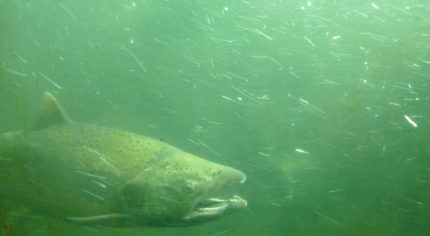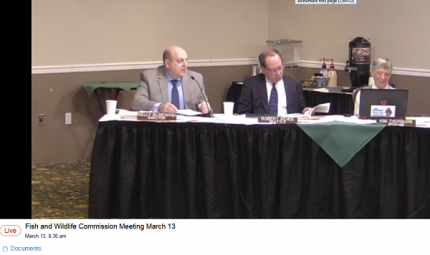
Susewind: WDFW ‘Aiming For 100 Percent’ Mass Marking Of Salmon, Steelhead
WDFW’s director expressed confidence that state staffers would be able to mass mark most if not all hatchery Chinook, coho and steelhead smolts even as fishing for returning adults is on pause in Washington through at the very least April 8 due to the COVID-19 outbreak.

“It’s pedal to the metal. Right now we’re aiming for 100 percent,” Kelly Susewind said while talking to outdoor reporters late this morning. “I think we’ll be close. I don’t think we’ll fall far short if we fall short.”
Adiposeless adult salmon and steelhead power the bulk of Washington angling opportunities for anadromous species and there was initial concern that due to distancing concerns, many state fish might have to be released without that back fin being cut, potentially putting mark-selective fisheries in the future in question.
Susewind said that with hatchery operations deemed essential, marking is one of the agency’s “priorities and an essential function.”
He said that while crews had been cut shifts had also been doubled towards that end.
“We’re working really hard to get everything marked,” Susewind said.

WDFW raises the lion’s share of hatchery fish in Washington, but many are also produced by the U.S. Fish and Wildlife Service, especially in the Columbia Basin, and numerous tribes.
Susewind said that trout were also being stocked in lakes, which makes room for next year’s crop at the same time.
He also talked about a question raised late last week on a framework for how fishing might be reopened in due time, through perhaps a county-of-residence option, but also said that the legality, equity and enforceability of that needed to be looked into.
Deputy Director Amy Windrope said that WDFW was trying to be mindful of local ordinances and not undermine those at the same time, or provide an incentive to flood closed areas. She said the agency was getting conflicting feedback from county commissioners to reopen fishing, to do so locally, and to not open the waters.
She said that speaking with other fish and wildlife agencies around the country, some states that are allowing fishing while social distancing are also seeing their game wardens becoming sick and having to go into quarantine.
Susewind indicated that staff and general public health and safety were top factors in being in compliance with Governor Inslee’s order and CDC recommendations to stay at or close to home.
Still, many Evergreen State anglers have been infuriated by the closures, and Susewind acknowledged there had been “a lot of input on the decision — I’ll put it nicely.”
Some have launched petition drives and others are calling for a boycott of license sales to starve WDFW of revenue.
For Susewind, the immediate concern isn’t so much budgetary as it is acting for the greater good.
“We need to look at this at a community level. These aren’t easy decisions or liked decisions. We spend our careers to provide opportunities. We’ll be here when it’s all over,” hopefully “as quickly as possible,” he said.

Windrope did express concern about the lack of eyes on the ground across the state, which may be leading to an uptick in vandalism at facilities, including bathrooms.
Last weekend the Edmonds Fishing Pier was tagged with graffiti and today agency game wardens reported spotting a plume of smoke of unknown origin on the Wenas Wildlife Area.
“Fire is a huge concern” because of how it could draw responders to be in close proximity to one another, she told reporters.
Speaking to the sense of loss of what was normal due to the rapid spread of coronavirus, Windrope worried about that uncertainty turning to anger.
“People need to manage loss without destroying the things they love,” she urged.
WDFW is expected to update hunters and anglers on April 6.





